
New voices 12 May 2021
By taking the issue of speed or slowness as an entry point, this research questions the way in which the design or adaptation of mobility infrastructures reveals a change in the relationship to space-time. This work is unique in that it recognises the importance of the materiality of these transformations and locates them in a particular context, that of the city and agglomeration of Brussels. At the interface between town planning, architecture, mobility studies, social sciences and aesthetic philosophy, this work analyses the mobility infrastructures that articulate functionality and aesthetics as constantly evolving sensitive environments - whether socially, phenomenologically or materially.
Cities are built to be traversed at certain speeds. The rhythm of the facades, the height of the buildings, the width of the traffic lanes… all are designed with reference to practices of speed and slowness to induce a particular experience of the city. My research focuses on the evolution of urban planning arrangements designed for the different forms of mobility that are considered to be fast and slow, and on the evolution of ways of being mobile and experiencing one's environment that these arrangements encourage. These elements are analysed as those through which the imaginaries (Castoriadis 1975) of speed and slowness are “embodied” in the city - i.e. these worldviews represent reality and, by giving meaning to the environment and to actions, are essential to ways of thinking and acting. These embodiments share the urban space and are interwoven at different scales. Indeed, despite the fact that we can move faster and faster (and communicate remotely), speed has not replaced slowness. On the contrary, city users deploy a range of speeds to move about the city — some of which are more valued in certain parts of the city and may be considered innappropriate in others.
Speed and slowness are defined, on this spectrum, according to constantly evolving benchmarks that go beyond the question of pace and rhythms. With the slowing down of cars and the acceleration of active mobilities, bicycles travel at speeds closer to those of an urban car than to those of a pedestrian. Slow mobilities - in their accelerated, sporty, fun and healthy variations - are being renewed to meet the city’s needs in terms of connectivity and to offer alternatives to cars. Over time, hybrid mobility practices and infrastructures emerge: between slowed-down speed and accelerated slowness. Nevertheless, I begin my research by distinguishing between motorised modes - which pertain to technical acceleration, to speed - and the “slow,” “soft,” “active” modes that are attached to slowness through their historical link to walking, leisure mobilities and the logic of places (Pelgrims 2019).
Speed and slowness are still at the heart of many debates on the development of public spaces today. The shift of frictions and articulations between speed and slowness bears witness to the tension between imaginaries that guides the long-term evolution of mobility infrastructures. Analysing all the imaginaries of speed and slowness together allows for a better understanding of the transformation of mobility infrastructures since the mid-twentieth century. In my thesis, I focused on the case of Brussels, which is interesting for its specific socio-cultural context, its significant modernist and postmodernist heritage, and the complexity of its urban planning apparatus shared between different levels of power 1 - even if this speed/slowness dialectic remains relevant for other contexts.
The dominant imaginaries of speed and slowness impact the scale at which the city is designed. To think about the city at different speeds is in fact to conceive it at different scales. To break down the long period studied, I employed the notion of “loosening” which was used during the Urban Renovation (1949-1989) in operations that aimed to relax and loosen the urban fabric at the scale of the agglomeration, to bring in the three fundamental materials of modern urban planning: sun, space, greenery; I opposed this notion to that of “tightening,” which, on the contrary, refers to the concentration of attractive functions in a built continuity on a restricted territory. These terms thereby come closer to the processes of automobilisation (extension of the human habitat, dispersion of places in space and fragmentation of temporal flows 2 enabled by automobile speed) and urbanisation (intensification of human habitat, concentration of places, unity of temporal flows) described by Sheller and Urry, which together characterise the modernity and culture of cities (2000). The tension between imaginaries of speed and slowness thus orchestrates the loosening and tightening dynamics within the urban fabric, acting simultaneously at different scales throughout the studied period, and referring to different conceptions of space and time. We can however distinguish three major incremental dynamics: the loosening in the modernist city (from 1950), the tightening in the postmodern city (from 1968) and the loosening in the city of the future (from 2000).
Through these dynamics, imaginaries of speed and slowness are subject to a double process. On the one hand, the pleasures and annoyances felt when experiencing the city renew or reinforce these imaginaries on a daily basis. On the other hand, imaginaries are embodied in the materiality of the city, continuously destructuring and restructuring it through a plurality of embodiments in the field, the sensitive dimension and the image. The imaginary of slowness, for example, is embodied both in the construction of cities through infrastructures dedicated to slow modes, speed-bumps and speed limits, but also in sensitive ways of moving slowly and experiencing one's environment (sensory-motor ways of being), which are themselves linked to positive affects, representations, stories, values and social norms that promote these forms of displacement. Compared to other concepts focusing on discourses such as that of a referential, 3 the value of the encompassing concept of imaginary lies in the advantage, beyond images, of various corpuses documenting the evolution of mobility infrastructures: local development plans, political debates, the materiality and detail of urban developments, as well as practices, discourses and representations.
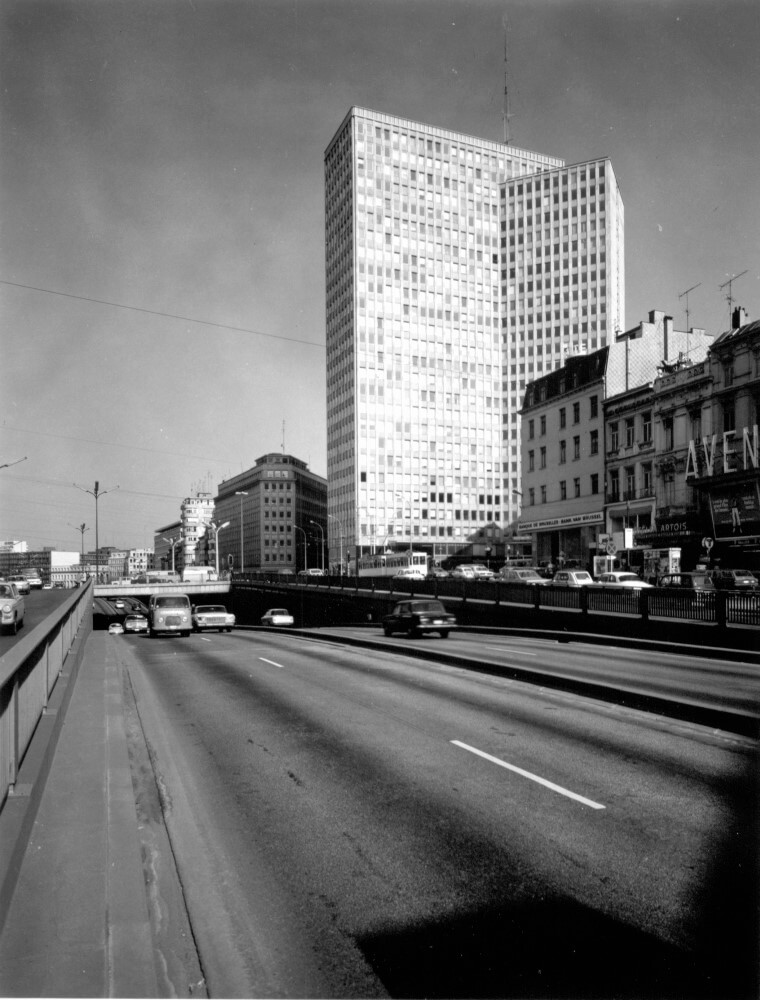
Figure 1 Porte de Namur and avenue de la Toison d'Or, 1972. © AGR, Photo library of the Min. of Public Works, no. 4/48067.
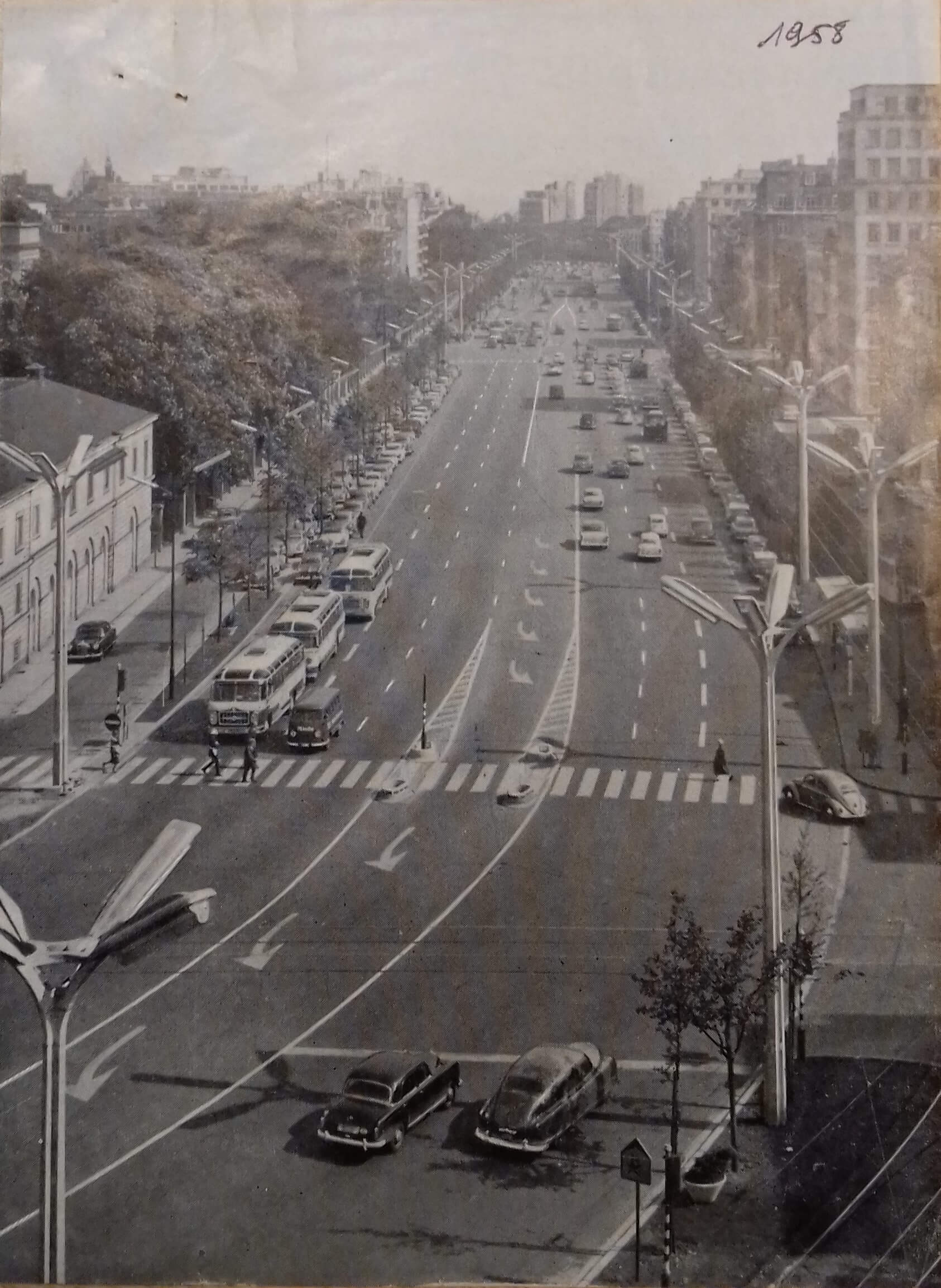
Figure 2 Motorway-type lighting on the boulevards of Petite Ceinture, 1958. © AVB, DD 529.
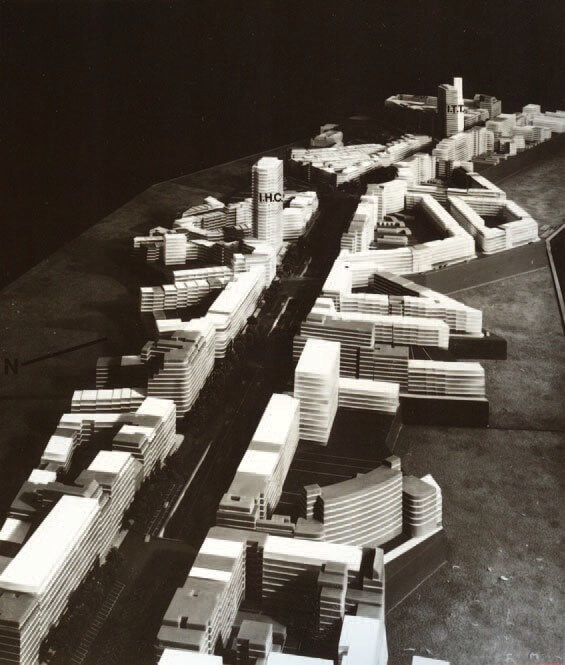
Figure 3 Model of the development plan for Louise Avenue, c. 1971. © Collection Georges Binder / Building & Data SA.
The Urban Renovation is the period that best encapsulates the imaginary of speed and the aesthetics of acceleration. This 1972 photograph (Figure 1) illustrates well the two logics which, from 1949 until the creation of the Brussels Region in 1989, underpinned the construction of a roadscape: this deployed landscape tangent to the road and its surroundings . It reinforced the separation between fast spaces and slow spaces, thus allowing the speed of cars to increase. Through high-rise architectures - here an office tower building - the aim was to “loosen” the city-centre by following the model of housing estates that were being developed at the same time in the parks of the close periphery (Leloutre and Pelgrims 2017). By building upwards and increasing the ground levels (tunnels, viaducts, metro, galleries), it was possible to respond to the increasing spatial pressure of automobility while safeguarding, on the edge of the roadscape, specific areas of slow mobility to strengthen the commercial centres and existing tourism. The base of the tower shown here hosted one of the six shopping centres of the upper side of the city, while the open square in front of it was supposed to form part (along with the side alley later transformed into a pedestrian zone) of a continuity of green or cultivated spaces all along the urban highway that is the Petite Ceinture in the foreground (Figure 2). This modernist architecture is thus conceived as a whole, a 3D volume, finely fitted to the roadway, which integrates the infrastructures of public transport, slow mobility and immobility. Placed in sequence along the urban highways between the green spaces (the King's gardens and La Cambre Abbey connected by tree-lined lawns), the modernist buildings on Louise Avenue, for example, were supposed to be part of a new modern landscape (Figure 3), in tune with the new society of the twentieth century, and were meant to be viewed at full speed through the windshield of a car – considered to be the symbol of freedom and modernity.
During the development of shopping centres in the upper side of the city, including the Galerie de la Toison d'Or (Figure4), two paradoxical logics emerged: one of acceleration of slowness and one of deceleration of slowness, by inviting pedestrians to move through the galleries all the while remaining there. Unlike narrow and congested sidewalks, these galleries make slow routes safer and offer pedestrians infrastructure with spatial and qualitative continuity. This, first of all, “accelerates” the slowness inside this specific space, in the sense that it encourages the shopper to explore it and move around within it, with walking being a resource for business (Pelgrims 2019). But secondly, it also paradoxically slows down pedestrian mobility and holds it captive within its restricted space. It is no longer a question of traversing the city on foot; on the contrary, the spaces reserved for pedestrians are isolated. To keep pedestrians in one place, the galleries multiply their functions: shops (here accessible by two gallery floors), restaurants, exhibition room ... Everything in the modern and luxurious atmosphere (lighting, distance between windows, greenery, surfaces) enjoins people not to leave (Figure 5). Finally, the cross-section of the Toison d'Or Gallery reveals the fine connection of rapid mobility infrastructures (metro access, parking, motorway tunnel) with this architectural complex, which thus stands as a destination in itself. Beyond this paradoxical injunction to move around and stay in place, the commercial urbanisation of shopping centres emancipated modern individuals from climatic conditions (people go up from the car park with elevators and escalators and do their shopping entirely indoors).
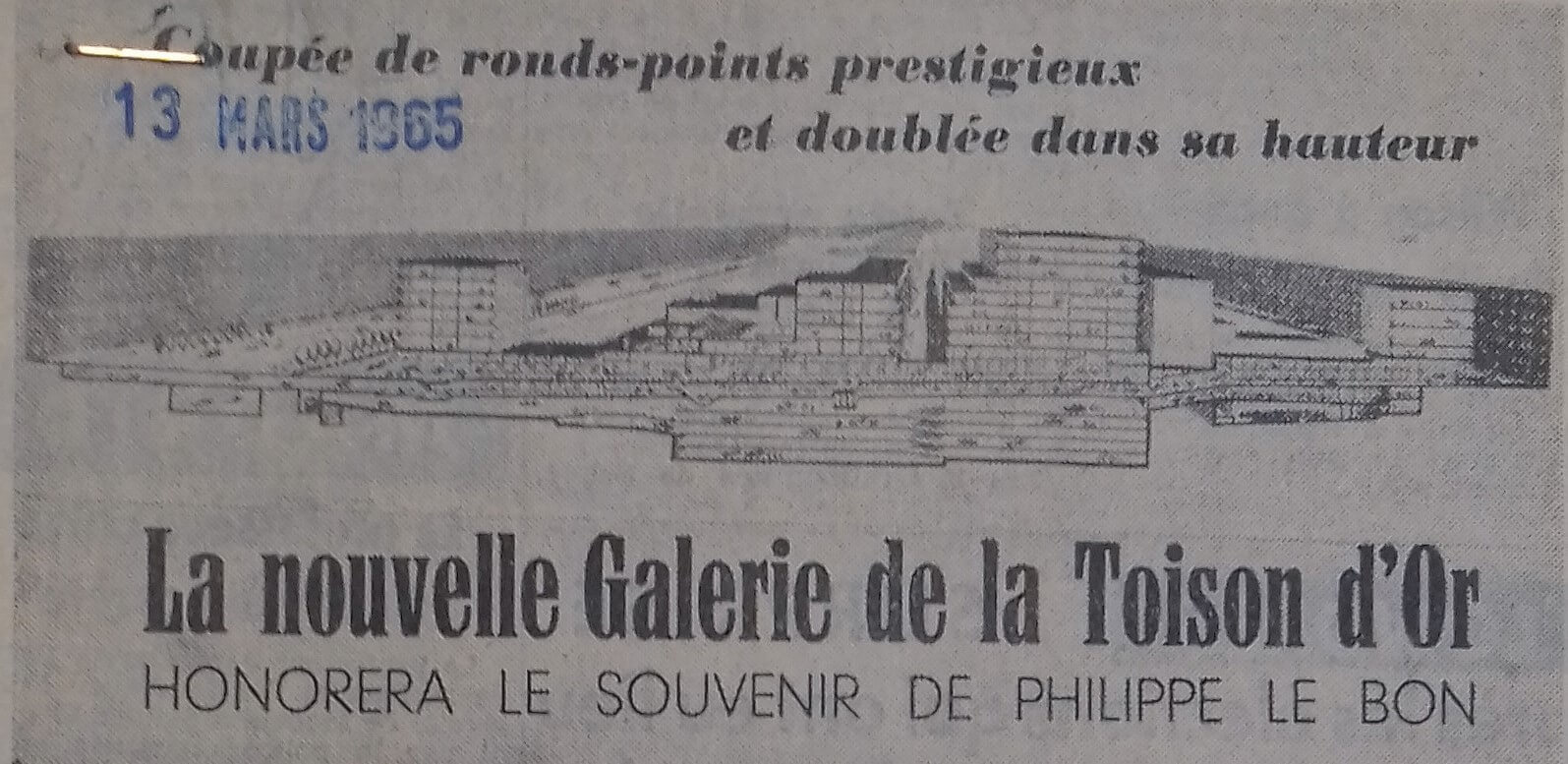
Figure 4 Cross-section of the Toison d'Or Gallery illustrating the multiplication of ground levels and the fine connection of rapid mobility infrastructures with the architectural complex (metro access, parking, motorway tunnel). Source: André Hustin, “The new Toison d’Or Gallery will honour the memory of Philippe le Bon. Punctuated by prestigious roundabouts and doubled in height”, March 13, 1965, p.1. © KBR.
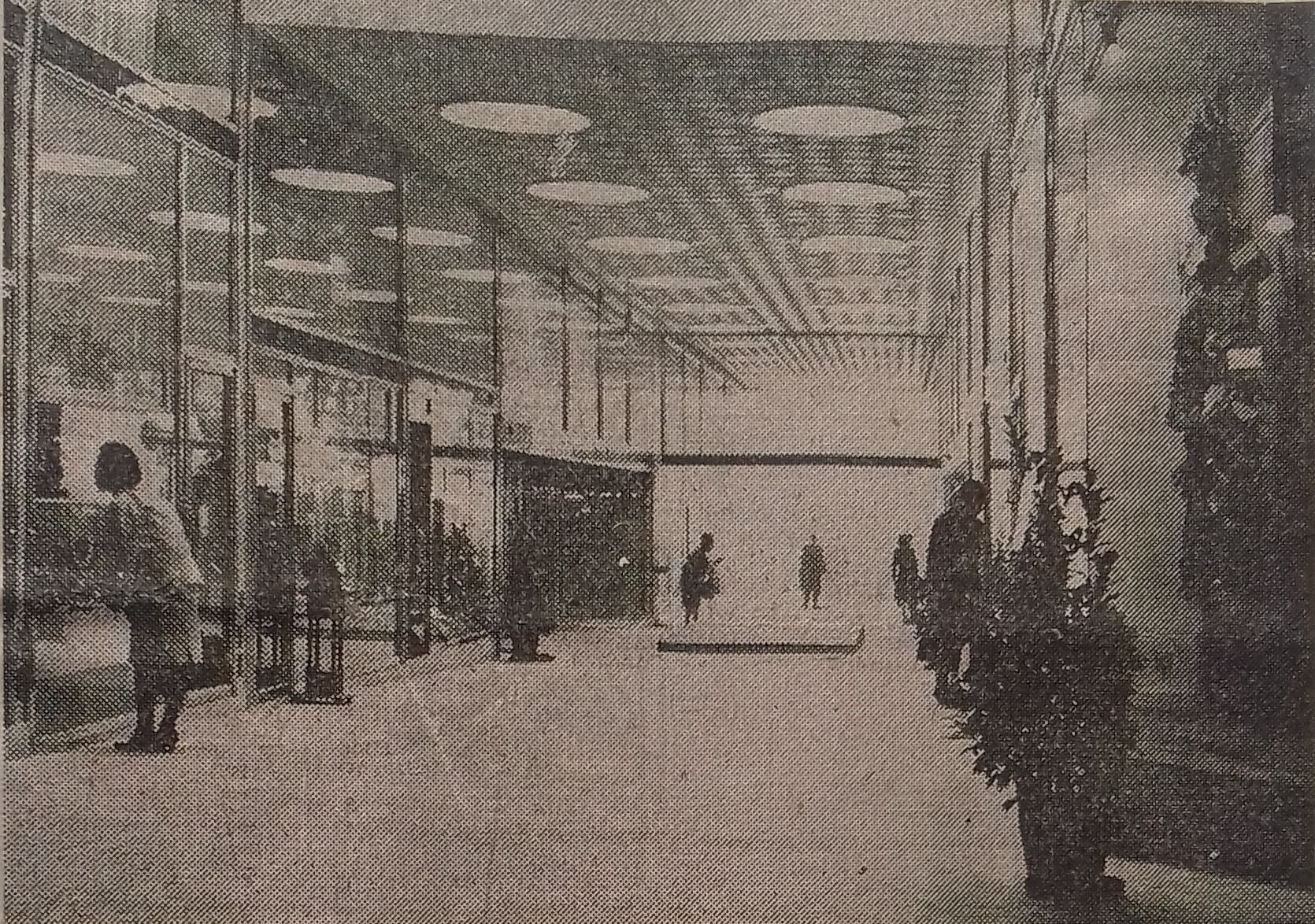
Figure 5 “The Toison d’Or Gallery accessible to pedestrians”, La Lanterne, October 8, 1965. © KBR.
It was in the pedestrian and semi-pedestrian spaces - surprisingly called at the time “open-air galleries” - around the galleries (Figure 6) and in the medieval city centre of Brussels (Figure 7), that a new logic appeared in the 1970s. With parking and, later, traffic being banned in order to accommodate pedestrians and defend the economic attractiveness of city-centres, the speed of cars was gradually made invisible in these particular spaces. Analysing the debates on the development of the city centre reveals how the definition of urban attractiveness slowly evolved, gradually moving away from a busy urban centre with high automobile traffic (which until then was synonymous with progress and modernity) and moving towards a more backward-looking aesthetic model, that of the idealised nineteenth-century European city described by Yves Chalas as the “city of yesterday”: “the city of harmony, the city of unity, the mineral city, the dense city, the city centre, the city of form with clear contours and a stable centre of gravity" (Chalas 1997, 242). It was the fall of the great narratives, the end of an age of ideologies that promised a better and exciting future (Ricœur 1991). We then turned to the past.
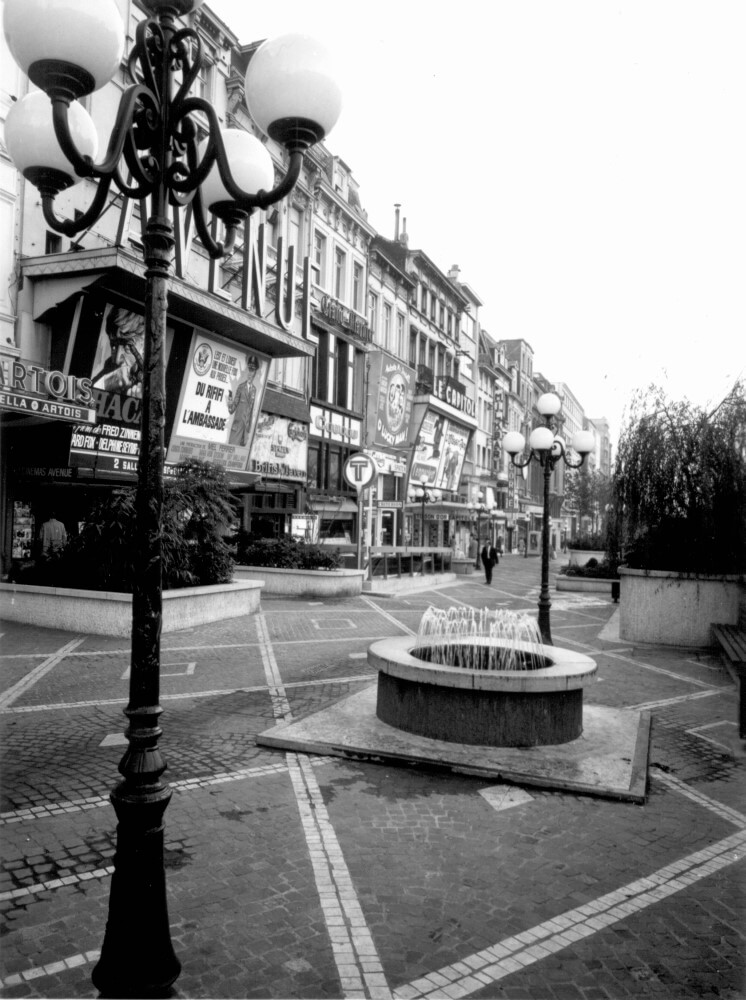
Figure 6 Avenue de la Toison d’Or, 1973. Public Works Fund © AGR, Photo library of the Min. of Public Works, no. 4/54600.
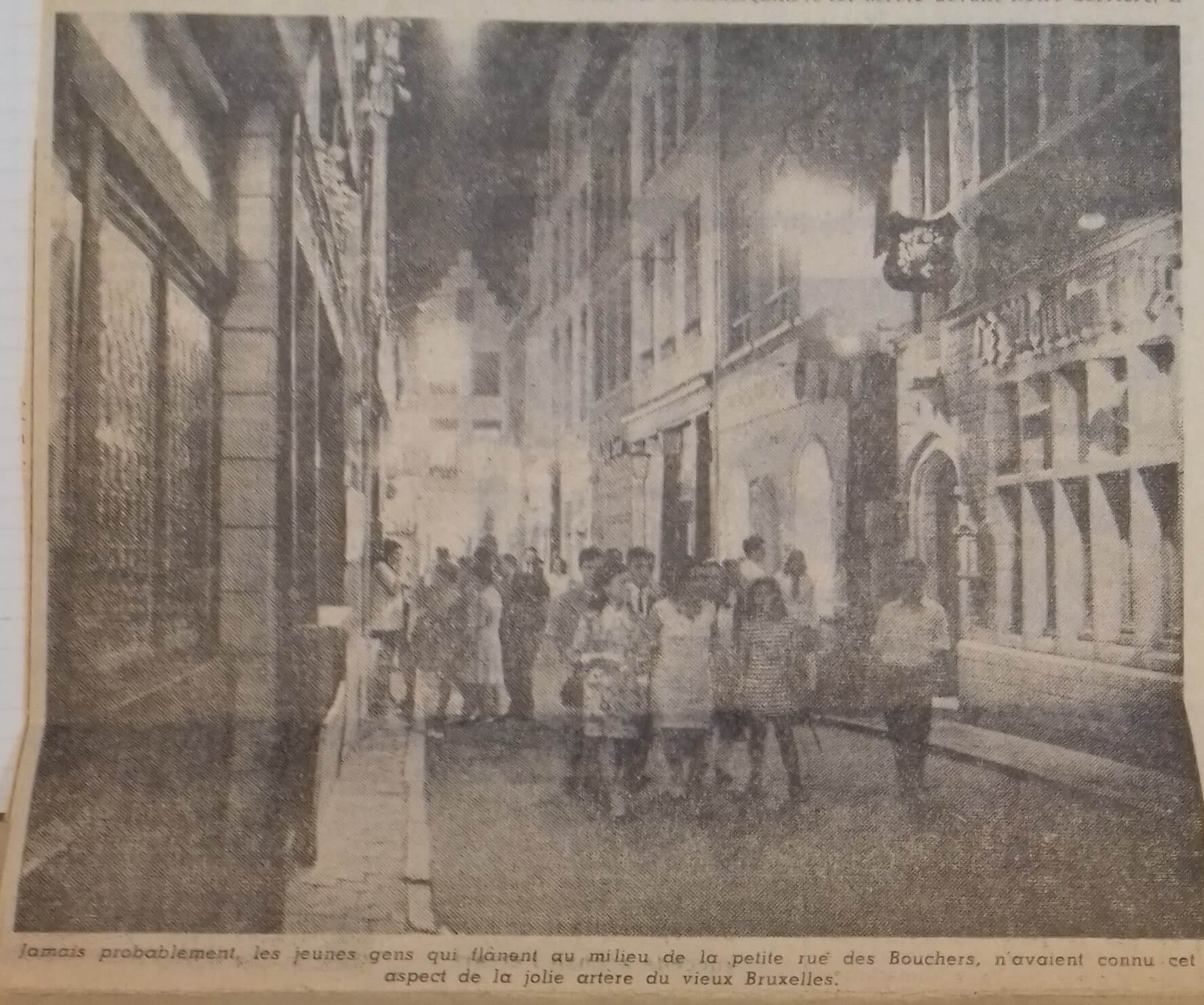
Figure 7 René Haquin, “Streets without cars in Brussels. What the inhabitants of L’Îlot Sacré think, where this experience has been going on for some time”, Le Soir, July 31, 1969, p.10. © KBR.
Through the policies of the Agglomeration of Brussels and, subsequently, of the Region, the question of diversity and of modal sharing of the road network was raised gradually and in a different way. Slowness was no longer considered only at the scale of specific destination spaces (shopping malls, heritage pedestrian areas, parks), but at the scale of the city centre to create a walkable city. The criticism of urban renewal during urban struggles 4 led to the movement for the Reconstruction of the European City, dominated by the imperative of granting heritage status to many buildings. The articulation, in the city centre, of the imaginary of slowness with the heritage issues raised by this ideological movement tended to favour the restoration of paved surfaces and the monumental perspectives of the city of the nineteenth century. The logic of qualitative continuity of pedestrian facilities often went hand in hand with renovation plans to reconstruct the facilities but also to reconstruct the idealised living-together (vivre-ensemble) of nineteenth-century European cities. The tightening densified the urban fabric to guarantee continuity of urban activity: the scale of the developments adapted to the pedestrian rhythm. Because the separation between speeds was no longer thought of at the scale of the agglomeration (in terms of pockets of slowness connected by speed), but at the scale of the street - in particular in the details of the edge of the sidewalk (Figure 8) - it also became necessary to decrease the speed of cars. In addition, there were logics of reducing automobile speeds which combined various devices to make speed invisible (prohibition of on-street parking, tunneling), to externalise it (widening of pedestrian areas, setting up of traffic loops that eliminate transit traffic) and to “tame” it (speed limits, speed bumps, blurring of modal segregation, etc.) (Pelgrims 2018). While the imaginary of slowness benefited from the growing importance of ecological imaginaries, these logics were gradually reinvested and clarified through the environmental management policies of the new Brussels Region created in 1989 - in particular to curb road noise.
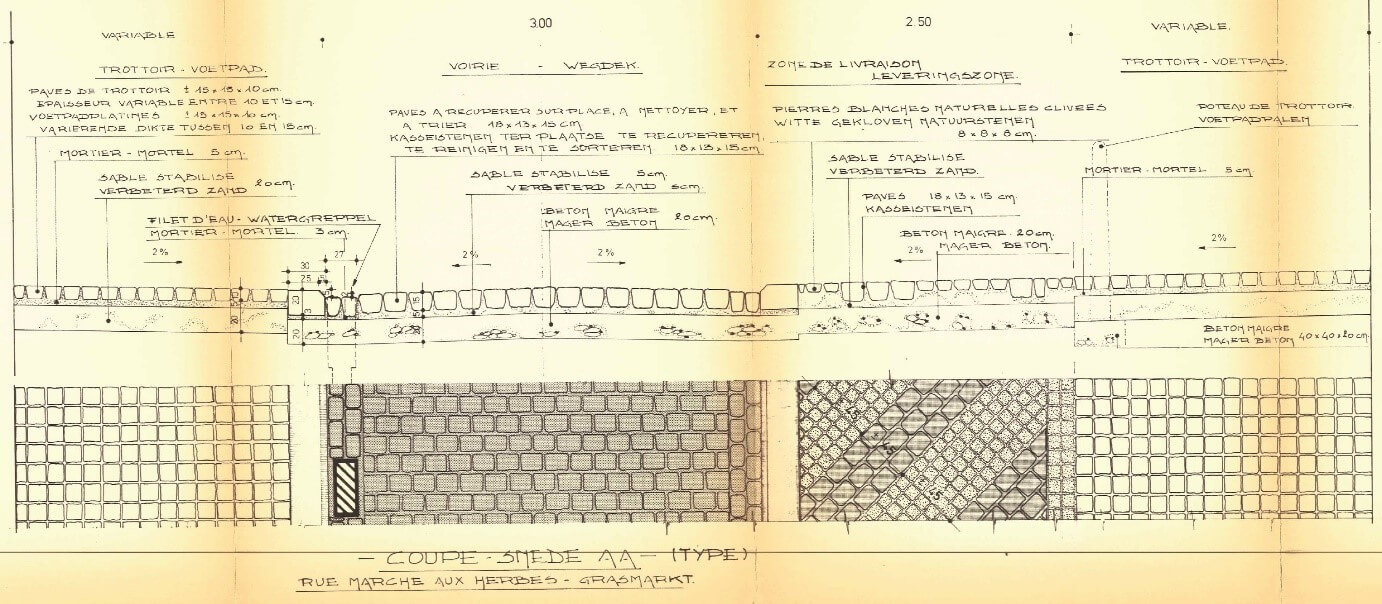
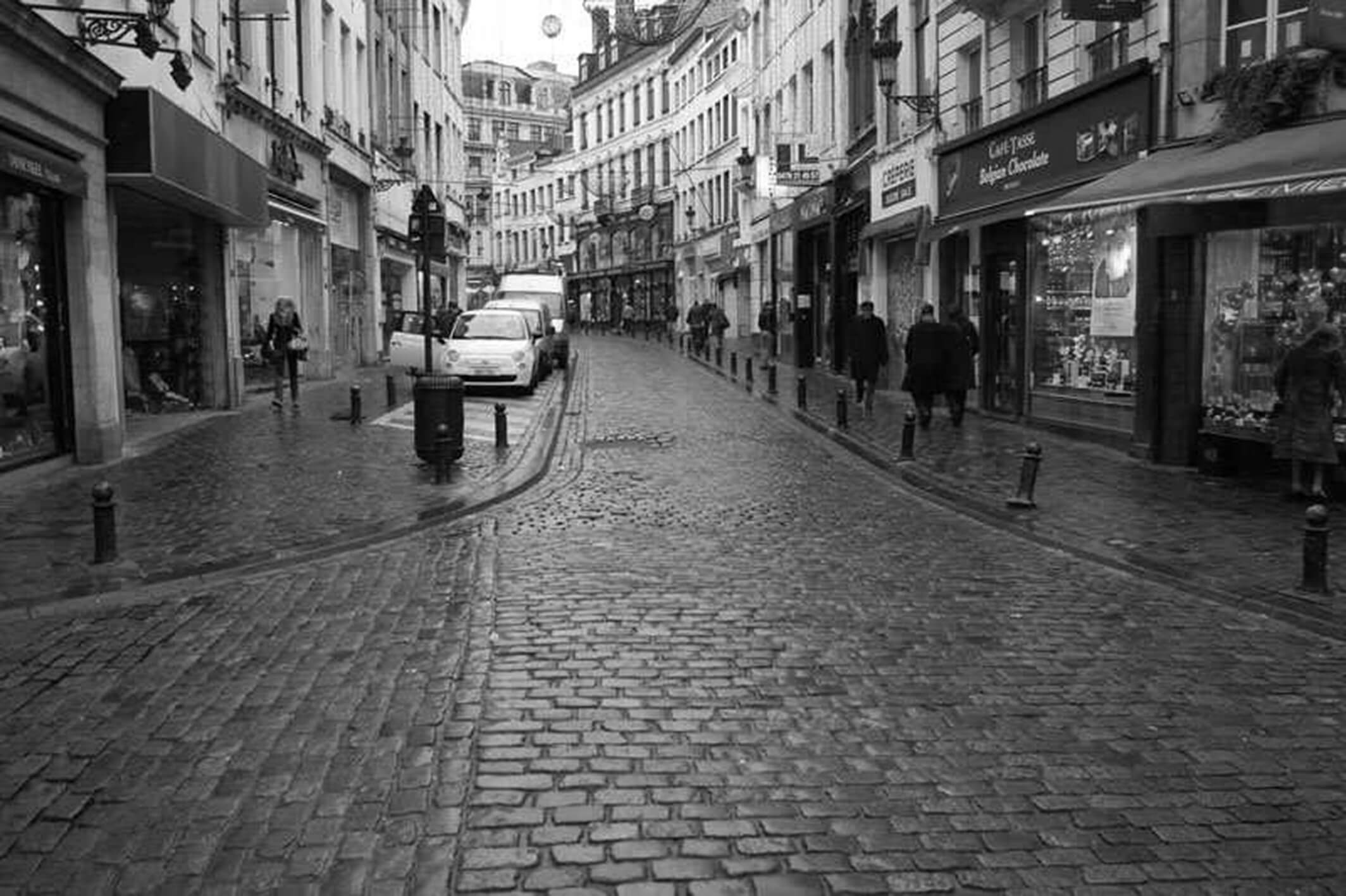
Figure 8 This section of rue Marché-aux-Herbes illustrates how the separation between speed and slowness operates, here only shown by a slight difference in the level between the road and the sidewalk. Source: Section A-A. Town planning permit for Rue Marché-aux-Herbes, 1993. © AVB, TP 105 573. (top) This development later became a model for the renovation of all streets of the historic centre. Historical Heritage Unit, “Historical study relating to the road surface in the district of the rue des Bouchers, petite rue des Bouchers, rue des Dominicains, rue d'Une Person, Impasse Schuddeveld, Impasse de la Fidélité and the Grand Place", Brussels, City of Brussels, October 2013, p. 10. (bottom)
The imaginaries of speed and slowness thus invested different parts of the city through time. Starting from the first punctual destination spaces bordering the roadscape or in the “heritage-status islands” of the city centre, the imaginary of slowness extended its hold to encompass a growing part of the city centre, going so far as to cover (with the regional 30 area for example) a significant part of the regional and metropolitan territory. It thus tended to replace the imaginary of automobile speed and imposed material and regulatory deceleration devices, as well as adapted practices. As an example of this last point, the fluctuations in how the road was divided between speed and slowness redefined the challenges of road safety and gradually shifted the responsibility for accidents from “unconscious” pedestrians and cyclists to “negligent” and “reckless” drivers.
At the start of the 2000s, the imaginary of slowness broke away from the model of the 19th-century European city to increase the city's cultural and commercial attractiveness. This objective required combining good accessibility to the capital with the slowness demands of privileged urban practices, linked in particular to the rise of the ecological imaginary on slowing down the pace of life, but also to the tourism industry and the consumption of the city.
Along with the diversification of slow, sporty and fun mobilities (bicycles, scooters, skateboards, electric unicycles, etc.), which were expected to play an important role in functional travel, the network of active mobility infrastructures also became more divided according to different degrees of efficiency (enables people to go quickly from one point to another), of readability (follows major urban axes) and of pleasure (allows an enriching experience of the environment). Walking infrastructures, for example, were classified into main routes, inter-district links and exclusive slow lanes which were added to the “basic” network of sidewalks covering the entire region. Previously, the traditional road hierarchy defined a road or a street according to its importance for automobile traffic, thus designating, in opposition, the space left to the other modes. Gradually, a “multimodal specialisation of roads” emerged, breaking down the road hierarchy for each mode.
On the one hand, this specialisation accentuated the logic of decelerating automobile speed and accelerating slow mobilities that was at work in the previous dynamic. As car speed practices slowed down or moved away from the city, their infrastructures could be re-appropriated for “more urban” mobilities. On the other hand, by developing a hierarchical network of slow lanes, it also followed the modernist city’s logic of separating spaces devoted to speed and slowness, in order to promote landscaped spaces that, while ensuring that different flows don’t intersect, enabled the acceleration of the diverse practices of slowness. The development of a network of bicycle “highways” is one example, but also the enhancement of an old railway line, which has since become an ecological corridor allowing plants and animals to migrate, as a cyclo-pedestrian route separated from traffic by several bridges (Figure 9). This logic tends to produce not a roadscape, but a “Comfort” network of cyclo-pedestrian paths promoting the natural and urban topography and landscape. It thus allows the different practices of slowness to better reconcile speed of movement with an enriching experience of the environment, while weaving new relationships of continuity between the city centre, the region and the nearby urban periphery. By expanding itself within a slow metropolis - one that is re-establishing links with its nearby periphery - cycling infrastructures are thus redefining the scale of the city in a process of urban loosening (Figure 10).

Figure 9 Example of a separate urban cyclo-pedestrian infrastructure, developed along the route of an old railway line located above the street. La Promenade du Chemin de Fer, 2010. © Dessin et Construction.
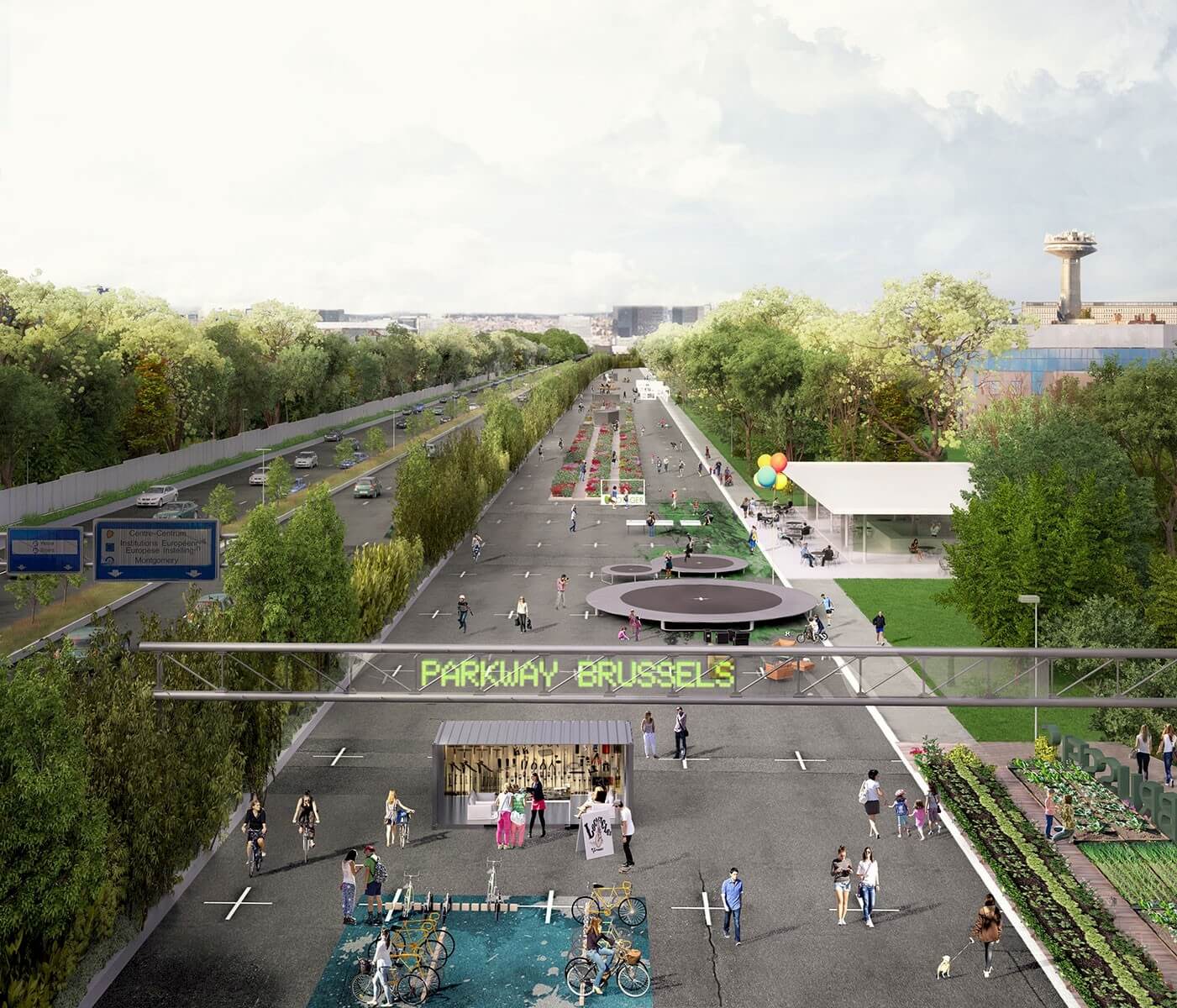
Figure 10 Urban project for the Brussels Parkway - E40, 2015. © TVK and Karbon' in association with OLM, EGIS, IDEA Consult and ELIOTH.
Each dynamic has thus been the subject in my research of a multi-scale approach: from the metropolitan or national scale of mobility planning to that of the constructive detail of mobility infrastructures giving rise to different ways of being. The point of this is to determine the sets of logics through which imaginaries of speed and slowness shape the city. These can be conceptualised through the notion of a grammar of urban planning and living together. This set of rules spatially transposes an abstract conception of the imaginary into arrangements favouring certain sensory-motor ways of being. By materialising, the imaginary stabilises and actualises the possible alternatives; its developments and practices gradually become standardised. Thus, each grammar allows, at the outset, the establishment of an alternative form of planning and living together, but then by gaining importance - like the previous dominant grammar before it - it formats the objects and ways of being, seeking to minimise or render invisible non-specified objects and behaviours deemed faulty with regard to this grammar (Pelgrims 2018, 155) - parked cars, highway-type traffic lights and lighting, driving a car fast, etc.
The concept of a grammar of urban planning and living together makes it possible to apprehend the stabilisation of mobility infrastructures and other embodiments of imaginaries. However, just like French grammar, these grammars of speed and slowness are not immutable. The continuous process of updating imaginaries through the experience of the city indeed involves a slow evolution of these grammars which become clearer, reinforce each other, transform and coordinate with each other to occupy different parts of the city. A good example is the transformation of the grammar of slowness, which has been deployed to occupy an increasingly important part of the territory of the city centre, of the region and then of the urban area.
At a certain point in my research, the question arose of how to approach the autonomy and agency acquired by certain mobility infrastructures in the city in order to maintain themselves, in particular the automobility infrastructure. This is how the idea of talking about mobility infrastructures as a fetish came about. I based my approach on four recurring themes around this concept, underlined by William Pietz’s (1987, 23) work on the history of the term – from the general theory of primitive religions to theoretical discourse of the twentieth century in anthropology, economics, psychiatry or aesthetic philosophy (Sartre 1986; Lévi-Strauss 1963; Deleuze 1972; Latour 1996). A fetish, which is a magical object endowed with a supernatural performative power, is loaded with values given to it by society. In the theoretical framework that I propose, by arranging the different embodiments in the city, the different grammars of the imaginaries of speed and slowness structure them in a more or less stabilised “system” according to the importance of the imaginary, of which the different elements in the field, the sensitive dimension and the image are intertwined and reinforce each other. The fetish is thus a strongly stabilised system, an assemblage of heterogeneous elements which draws its power from this intertwining.
For example, the automobility infrastructure (in its meaning and value) depends on the social and material system of automobility described by Sheller and Urry (2000), of which it is a part. In particular, the dominant culture of automobility induces normative discourses on what constitutes a good life, it conveys images and symbols that enhance this form of individual mobility by equating it with the exercise of personal freedom, and makes automobile mobility and its infrastructure “natural” in our daily lives.
The automotive infrastructure is part of an assemblage of infrastructures, buildings, signs (traffic signs, displays, white lines, etc.), but also of beliefs, fears and affects, images, values (freedom, emancipation, democracy, individualisation…) and of practices (functional and leisure mobility, self-expression, social distinction…). This assemblage has the power to expand thanks to a snowball effect described as the “magic circle” (Dupuy 1999) of automotive development. The expansion of the road network encourages motorists to drive more, causing more people to buy a car to leverage the growing advantages of being a motorist, thus increasing automobile traffic and, in turn, the need for further development of the road network. This assemblage also extends its influence because it renews both the way people experience the city and its aesthetic sensibility. The assemblage of buildings, roads and nature within the roadscape sets the scene for what is considered a better society and a happy life, but also constitutes a modernist “aesthetic unit” that amplifies the pleasure of driving - something which is also echoed through cinema, photography, literature, advertising, etc. (Figure 11) - and stabilises the imaginary of automobile speed and its embodiments.
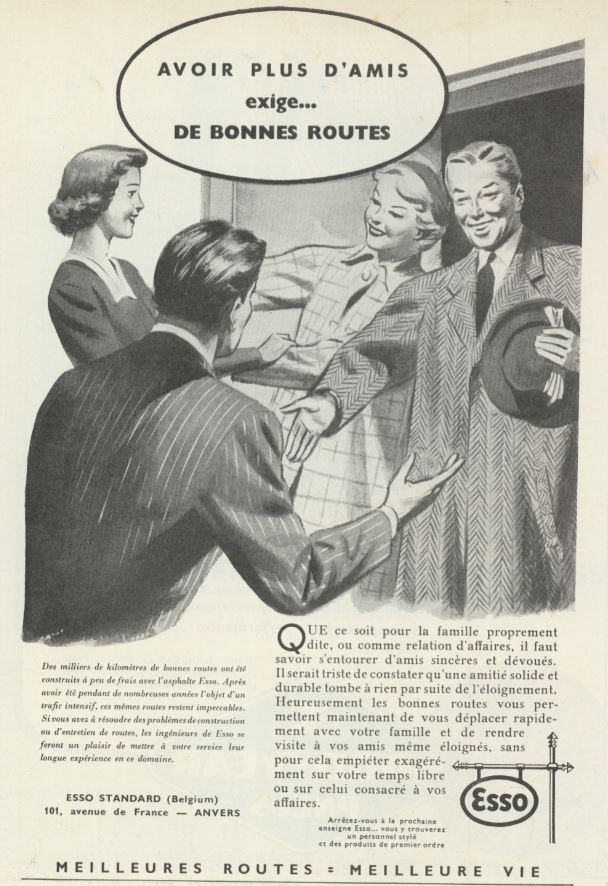
Figure 11 Example of an Esso advertising campaign “Better roads = Better life” in Routes, 1951, no. 7, p. 314. © ExxonMobil
These pleasures of driving emanate from bodily sensations, particularly visual sensations, but also from a feeling of ubiquity and agility in the management of daily rhythms (Figure 12) – despite the fact the infrastructure of automobility constitutes a network led by technocracy and experts (Highway Code, etc.) that constrains individuals in their movements, interpersonal relationships and lifestyles. Indeed, the infrastructure of automobility, by loosening the city, increases the distances to be covered and forces individuals to “orchestrate their mobility and socialities in complex and heterogeneous ways” within a timeframe that remains unchanged. (Urry 2005, 71)
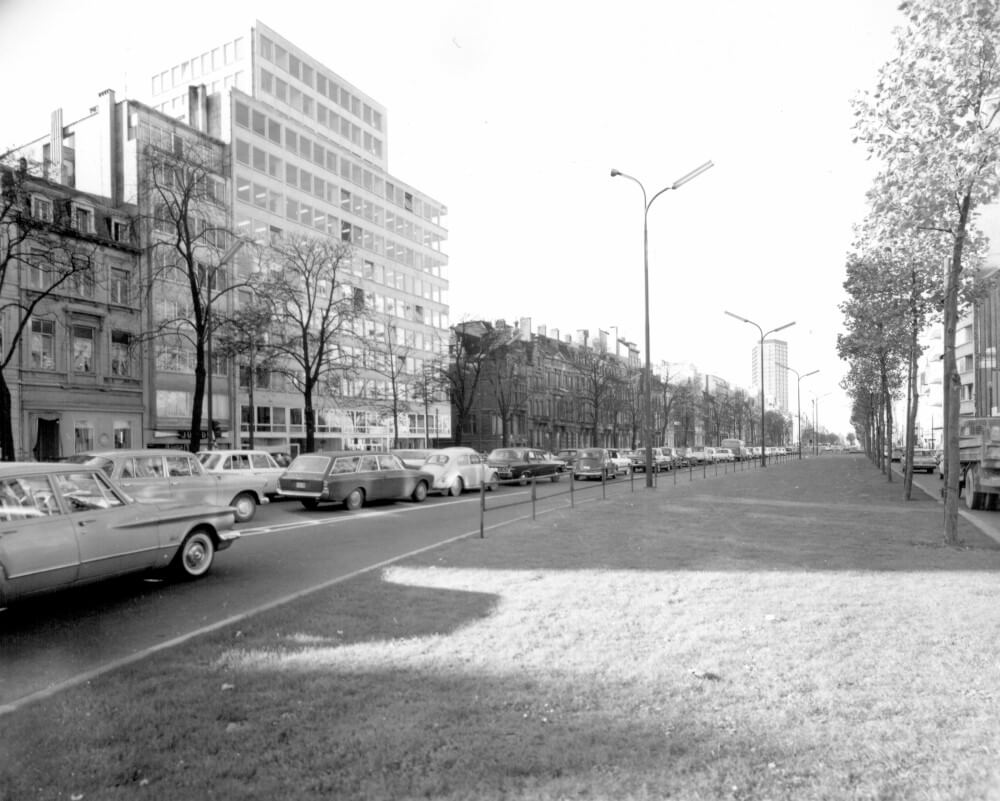
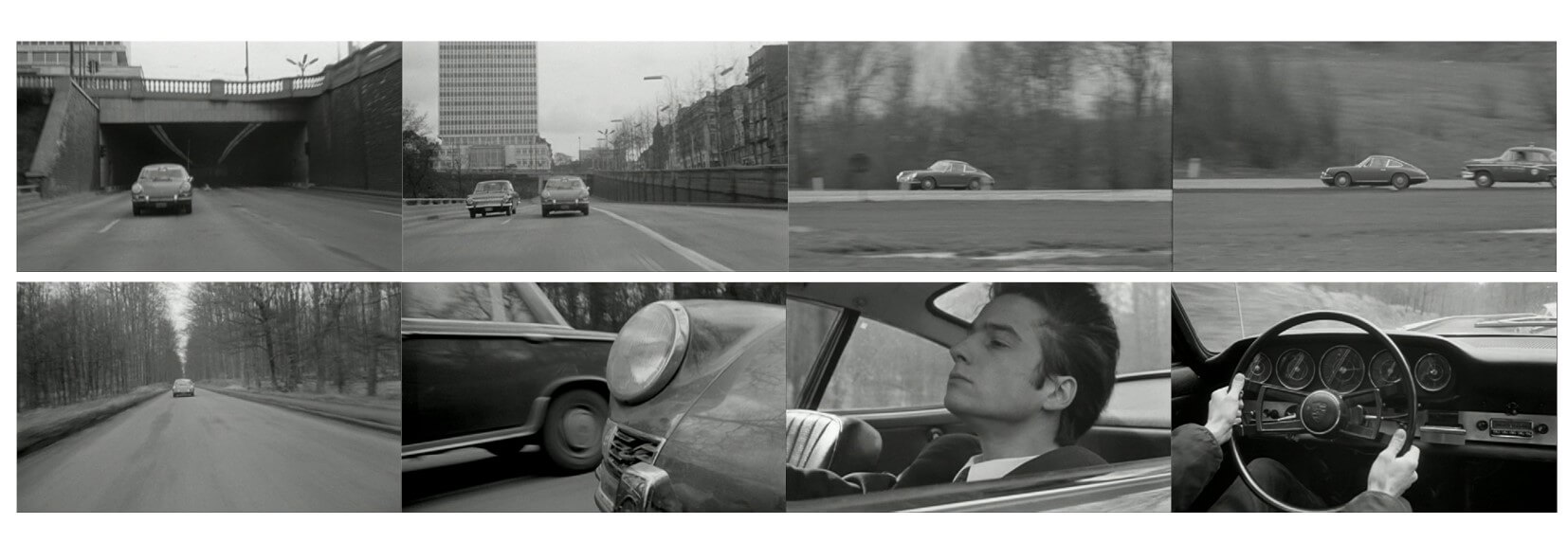
Figure 12 Louise Avenue, 1967. © AGR, Photo library of the Min. of Public Works, no. 4/28550. (top) Jerzy Skolimowski, Le Départ, 1967. (bottom)
Through this example of the infrastructure of automobility, we see that the terrain (here the road) draws its autonomy and its power from this system of interrelationships with the other embodiments of the imaginary of automobile speed in the sensitive dimensions and the image. In particular, the pleasure of travelling appears from this perspective as an essential element in the stabilisation of the infrastructure. However, its definition can change depending on the experiences promoted in the city, or on the urban models (modernist, heritage, etc.) that guide the beautification of buildings and streets by public authorities. These vary greatly, even if the attractiveness of the city is a recurring argument in the three dynamics. The aestheticisation of the experience of speed and slowness is played out in the adaptation of the urban form and environment to the different practices, to accentuate the specific bodily sensations of different modes of mobility. The roadscape, for instance, offers a new tangent and kinetic monumentality that can only be fully enjoyed at full speed on urban highways. This promoted experience also contributes to the animation of spaces (animated city, accelerated versus appeased and slowed down) the appreciation of which evolves over a long time, revealing more generally the continuities and discontinuities of the urban atmospheres 5 that are valued. Today, the reduction of automobile speeds allows the development of calm and attractive urban environments, enabling the development of social relations and desirable experiences of the urban setting, in particular through slow mobilities which are accelerated by accessories and playful vehicles.
Consequently, I deploy the concept of a fetish (Pelgrims 2020) to better understand these interrelations and interdependencies by which the different embodiments of the imaginary are mutually reinforcing. I thus avoid the difficulties encountered by studies in the field of mobility or urban planning which neglect the representative (mental images visible through film, photography) and aesthetic dimensions (desires; affective, sensitive and passionate investments) of infrastructure. This concept of a fetish makes it possible to highlight the functional, sensitive and socio-symbolic dependencies on the automobility infrastructure which explain its stabilisation, permanence and dominant spatial influence (Pelgrims 2020). It allows us to differentiate between practices (whether they are emerging, dominant or residual) that respond to different attachments to infrastructure (for itself or for what it allows) and structure different communities (athletes, collectors, intellectual elites, environmentalists) around different values (mobility, freedom, ecology, social distinction, health, sport), which themselves resonate through different facets of this infrastructure (the network it forms, its exceptional structures, its aesthetic and desirable works of art, as urban markers bearing witness to the technological progress of society, etc.) (Pelgrims 2020). The concept of a fetish also opens up avenues to think about how to stabilise new forms of mobility. I also use this concept to analyse investments in cycling infrastructure, which are currently growing and creating hope for a more sustainable alternative society.
My hypothesis is that through the acceleration of slowness, new emotional and ethical relationships are gradually being interwoven with mobility and the city, through a renewed assimilation between individual (active) mobility and personal freedom (Pelgrims 2019). The four themes of the fetish allow us to analyse the interweaving between the cycling infrastructures and the other embodiments of the imaginary of accelerated slowness, with which, together, they form a system.
(1) Dependence on the system. Cycling infrastructures underpin and depend on an emerging social and material system: velomobility, which is based on what Frédéric Héran (2018) defines as the “bicycle system” (affordable bicycles, a network of infrastructures and services, regulations, communication and training, etc.). This system is legitimised, on the one hand, by the technical approach of transport engineers and economists who rationalise the flow of pedestrians, cyclists, cars and public transport to organise how public space is shared, in response to urban and environmental crises. Cycling activists, on the other hand, help to spread more widely the benefits of the cycling network for more sustainable and ethical lifestyles, striving to disseminate new cycling cultures.
(2) The magic circle of infrastructure development. The fetish that looms in the city of the future is also an assemblage – one of cycling infrastructures, buildings, signs, beliefs, fears and affects, images, values of personal freedom and practices of individual active mobility - which draws its identity and power from its enduring ability to renew and expand. It transforms its environment to strengthen and stabilise the practice of cycling through what we might call a “magic circle” of the development of soft mobility infrastructures. In the literature, we indeed find discussions of virtuous circles enabling the development of the bicycle system (Héran 2018). This increasingly allows for new mobility infrastructures to organise the experience of the city by bicycle. As a result, they promote a sensitivity to beauty that is specific to the speed at which people travel through the city, renewing the pleasures of pedalling in the compact but green city (Figure 13).
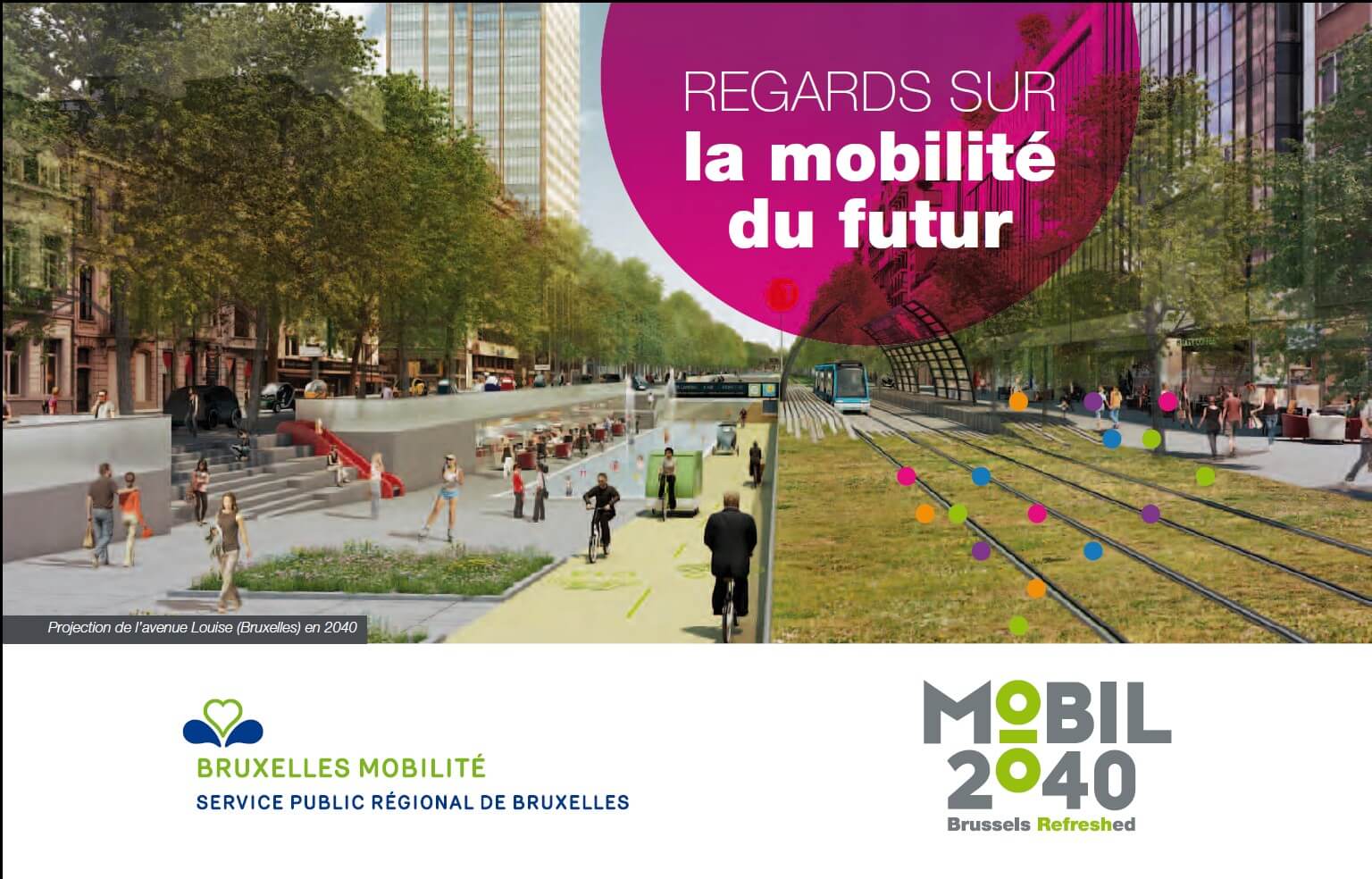
Figure 13 Projections of Louise Avenue and the Botanical Garden Boulevard in 2040. Bruxelles Mobilité, “Mobil 2040. Regards sur la mobilité du futur” [“Mobil 2040. Perspectives on the mobility of the future], Presentation brochure, Brussels, 2014, p. 1.
(3) Its transcendent materiality. This assemblage of heterogeneous elements that is the fetish amplifies and crystallises itself through the feeling of freedom one enjoys when travelling by bicycle. In contrast to driving a car at rush hour, riding a bicycle provides a feeling of ubiquity and agility in the management of daily rhythms (the ability to get anywhere quickly and to be flexible, avoiding traffic congestion). It also offers a range of bodily sensations, linked to the physical dimension and embodied in the practice of speed (the pleasure of the physical effort and controlling the bike, the sensory perception of the wind, the sun, the atmosphere, the quality of the terrain and the landscape) (Figure 14), which resonate poetically (Sansot 1971) with cultural representations of the emancipatory bicycle. Cycling infrastructures thus become the “magical” place of an experience assimilated to the exercise of personal freedom, but also, and above all, of a particular relationship - a reconnection - to space, time and to oneself. This new fetishisation of cycling infrastructures - a hybrid of speed and slowness - therefore combines the values traditionally associated with speed (efficiency, connectivity, freedom, progress) with those more readily connected to slowness (ecology, slowing down the pace of life, engaging with one’s environment).
(4) The external body of control. Conversely, the cycle network can also be considered as a network that constrains all individuals in their movements (prioritisation of modes, direction of traffic, timing of traffic lights); a network which above all forces daily cyclists to relocate their way of life. In fact, unlike automobility infrastructures which promote the diffusion of housing and activities throughout the territory, this network encourages people to relocalise their habitat, their centres of interest (work, school, leisure, various activities, etc.) and their social network within the smaller radius of the action of the bicycle.
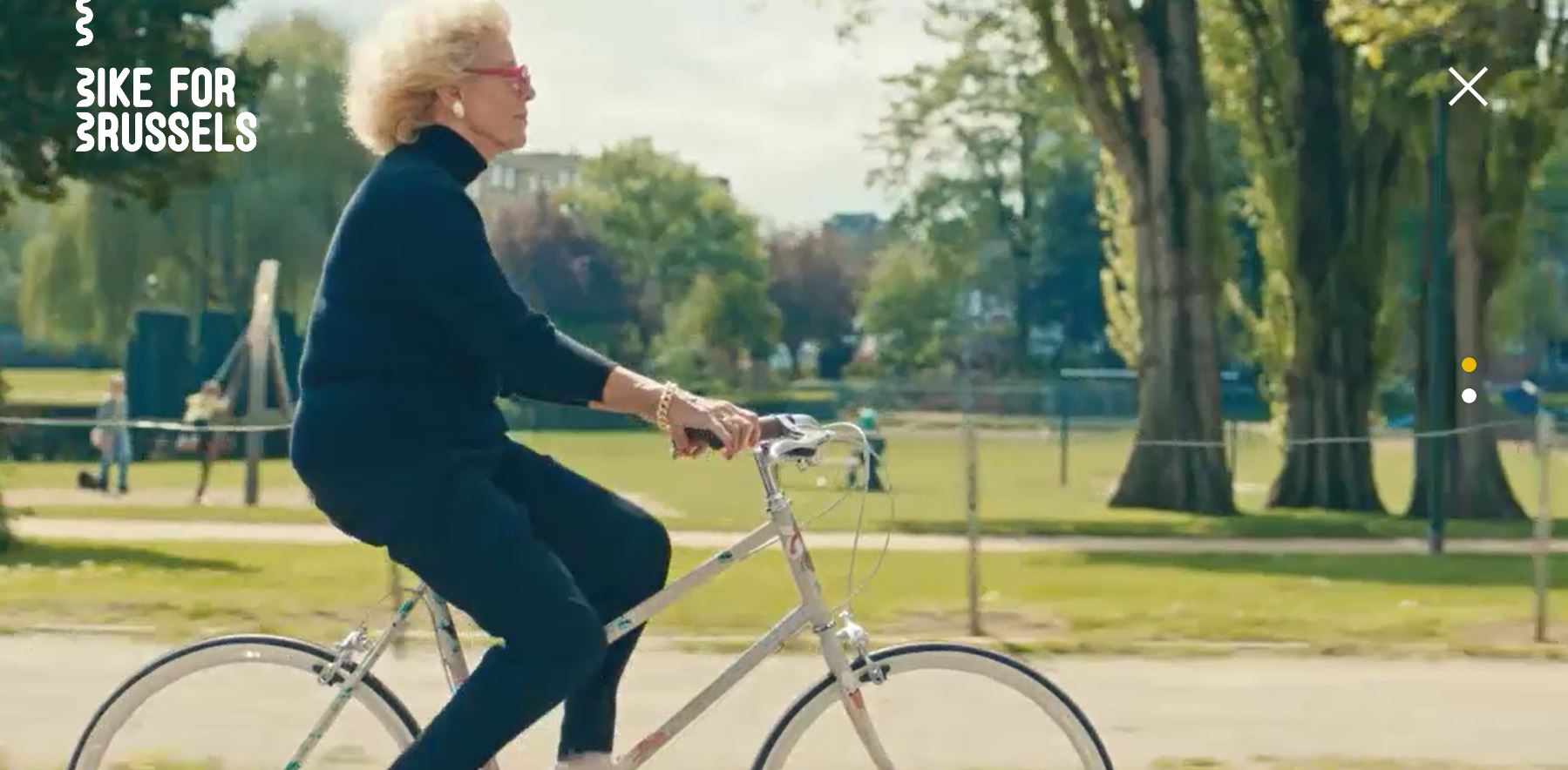
Figure 14 Photograph used as part of the “Bike for Brussels” awareness campaign, 2018. © Bruxelles-Mobilité.
One of the goals of the research was to discuss the notions of speed and slowness by studying this double process of loosening and tightening of urban developments, acting simultaneously at different scales throughout the studied period and in which the tension between imaginaries of speed and slowness is also at play. These imaginaries are transposed into different grammars of urban planning and living together (grammar of automobile speed, of modernist slowness, grammar of slowness and, finally, of accelerated slowness) to regulate the articulation between speed and slowness. The tension between the imaginaries of speed and slowness therefore contributes to changing the scale of the city as well as the boundaries between the spaces devolved to speed and slowness. The continuity of this tension can also be seen in how the aesthetic which is valued through the urban atmosphere evolves. The aesthetic, emotional, practical and cultural investments in a city that are experienced in motion, as they evolve through the three studied dynamics, were discussed around the concept of the fetish.
Relevant for other contexts, the two concepts of grammars and fetishes open up different research avenues on the articulation between the functionality and aestheticisation of mobility infrastructures. These perspectives appear more timely than ever in order to inform a transition of contemporary mobilities towards greater sustainability - a transition that relies on imaginaries and especially on the sensitive, emotional and ethical resonances between mobility practices and infrastructures.
Castoriadis, Cornelius. 1975. L’institution imaginaire de la société [The imaginary institution of society], Paris: Seuil.
Chalas, Yves. 1997. "Les figures de la ville émergente" [The figures of the emerging city]. In La ville émergente [The emerging city], edited by Geneviève Dubois-Taine and Yves Chalas, 237‑70. Collection Monde en cours. La Tour d’Aigues: Editions de l’Aube.
Deleuze, Gilles. 1972. Différence et répétition. [Difference and repetition] Paris: PUF.
Dupuy, Gabriel. 1999. "From the “Magic Circle” to “Automobile Dependence”: Measurements and Political Implications". Transport Policy 6 (1): 1‑17. https://doi.org/10.1016/S0967-070X(98)00028-6.
Héran, Frédéric. 2018. "Système vélo" [Bicycle system]. Mobile Lives Forum - Préparer la transition mobilitaire [Preparing for the mobility transition]. May 28, 2018. http://fr.forumviesmobiles.org/reperes/systeme-velo-12437.
Latour, Bruno. 1996. Petite réflexion sur le culte moderne des dieux faitiches [sic]. Les Empêcheurs de penser en rond. [A little reflection on the modern cult of the fetish gods [sic]. The Preventers from thinking in circles.] Le Plessis-Robinson: Synthélabo groupe.
Leloutre, Géry, et Claire Pelgrims. 2017. "Le roadscape bruxellois. Le rôle de la route dans la rénovation urbaine ou la coproduction d’une infrastructure paysagère" [The Brussels roadscape. The role of the road in urban renewal or the co-production of landscape infrastructure]. In L’entrée en ville. Aménager, expérimenter, représenter. [Entering the city. Arranging, experimenting, representing.], edited by Tatiana Debroux, Yannick Vanhaelen, and Judith le Maire, 43‑62. Bruxelles: Editions de l’Université.
Lévi-Strauss, Claude. 1963. Le totémisme aujourd’hui. [Totemism today] Paris: PUF.
Muller, Pierre. 2014. "Référentiel" [Referential]. In Dictionnaire des politiques publiques [Dictionary of Public Policies], edited by Laurie Boussaguet and Peter A. Hall, 4. éd, 555‑62. Références. Gouvernances. Paris: Presses de Sciences Po.
Pelgrims, Claire. 2018. "Aménager la lenteur. La dimension imaginaire de la piétonnisation du centre-ville bruxellois" [Managing slowness. The imaginary dimension of the pedestrianisation of Brussels' city centre]. Espaces et societes n° 175 (4): 143‑62.
———. 2019. "Tension between Fast and Slow Mobilities: Examining the Infrastructuring Processes in Brussels (1950–2019) through the Lens of Social Imaginaries" [Tension between Fast and Slow Mobilities: Examining the Infrastructuring Processes in Brussels (1950–2019) through the Lens of Social Imaginaries.], Transfers 9 (3): 20‑40. https://doi.org/10.3167/TRANS.2019.090303.
———. 2020. "Fetishising the Brussels roadscape". Journal of Transport History 41 (1): 89‑115. https://doi.org/10.1177/0022526619892832.
Pietz, William. 1987. "The Problem of the Fetish, II: The Origin of the Fetish". Res: Anthropology and Aesthetics 13 (mars): 23‑45. https://doi.org/10.1086/RESv13n1ms20166762.
Ricœur, Paul. 1991. Temps et récit. Le temps raconté. [Time and narrrative. The time told.] Vol. 3. 3 vol. Paris: Éd. du Seuil.
Sansot, Pierre. 1971. Poétique de la ville. [Poetics of the city] Paris: Klincksieck.
Sartre, Jean-Paul. 1986. Questions de méthode. [Questions of method.] Edited by Arlette Elkaïm-Sartre. Ed. rev. and Annotated. Collection Tel 111. Paris: Gallimard.
Sheller, Mimi, et John Urry. 2000. "The City and the Car". International Journal of Urban and Regional Research 24 (4): 737‑57. https://doi.org/10.1111/1468-2427.00276.
Urry, John. 2005. Sociologie des mobilités: Une nouvelle frontière pour la sociologie ? [Sociology of mobilities: A new frontier for sociology?] Paris: Armand Colin.
1 Since 1989, urban planning and mobility competences have been shared between the Brussels-Capital Region and the 19 Communes (municipalities) that constitute it. Previously, the Province of Brabant and later the Agglomeration of Brussels constituted intermediary entities between the municipalities and the national state whose powers were shared between the Ministry of Public Works and its Road Administration on the one hand, and the Ministry of Communications and its (Public) Transport Administration on the other.
2 The day’s activities are perceived no longer as a continuity, but as isolated moments separated by periods of displacement which constitute many breaks in one’s rhythm and space.
3 A sort of consolidated imaginary associated with Pierre Muller's cognitive analysis, the concept of a referrential underlines the important role of ideas, discourses and narratives in the definition of public policies. However it struggles to take into account the emerging imaginaries that arise from sensitive pre-reflexive disorders and are then “constructed” and “clarified” into discourses and claims through the controversies that shape the urban environment.
4 The urban struggles that plagued Brussels from the 1970s revived the opposition between traditionalists and modernists. The residents' associations defended the existing buildings against demolitions, and favoured quality of life in the city over automobilisation. This citizen activism challenged political authorities and raised public awareness with some cases gaining media coverage: the struggle of the Marolles and the North Quarter, in particular.
5 The atmosphere (ambiance) is defined as "a space-time experienced in sensitive terms" (Thibaud 2010, 206).
For the Mobile Lives Forum, mobility is understood as the process of how individuals travel across distances in order to deploy through time and space the activities that make up their lifestyles. These travel practices are embedded in socio-technical systems, produced by transport and communication industries and techniques, and by normative discourses on these practices, with considerable social, environmental and spatial impacts.
En savoir plus xMovement is the crossing of space by people, objects, capital, ideas and other information. It is either oriented, and therefore occurs between an origin and one or more destinations, or it is more akin to the idea of simply wandering, with no real origin or destination.
En savoir plus xActive mobility refers to all forms of travel that require human energy (i.e. non-motor) and the physical effort of the person moving. Active mobility occurs via modes themselves referred to as “active,” namely walking and cycling.
En savoir plus xThe bicycle system refers to all the facilities, materials, services, regulations, information and skills involved in ensuring effective, comfortable, safe cycling practice in a given territory.
En savoir plus xLifestyles
To cite this publication :
Claire Pelgrims (12 May 2021), « The place of the imaginaries of speed and slowness in the evolution of mobility infrastructures », Préparer la transition mobilitaire. Consulté le 10 April 2025, URL: https://forumviesmobiles.org./en/new-voices/13691/place-imaginaries-speed-and-slowness-evolution-mobility-infrastructures